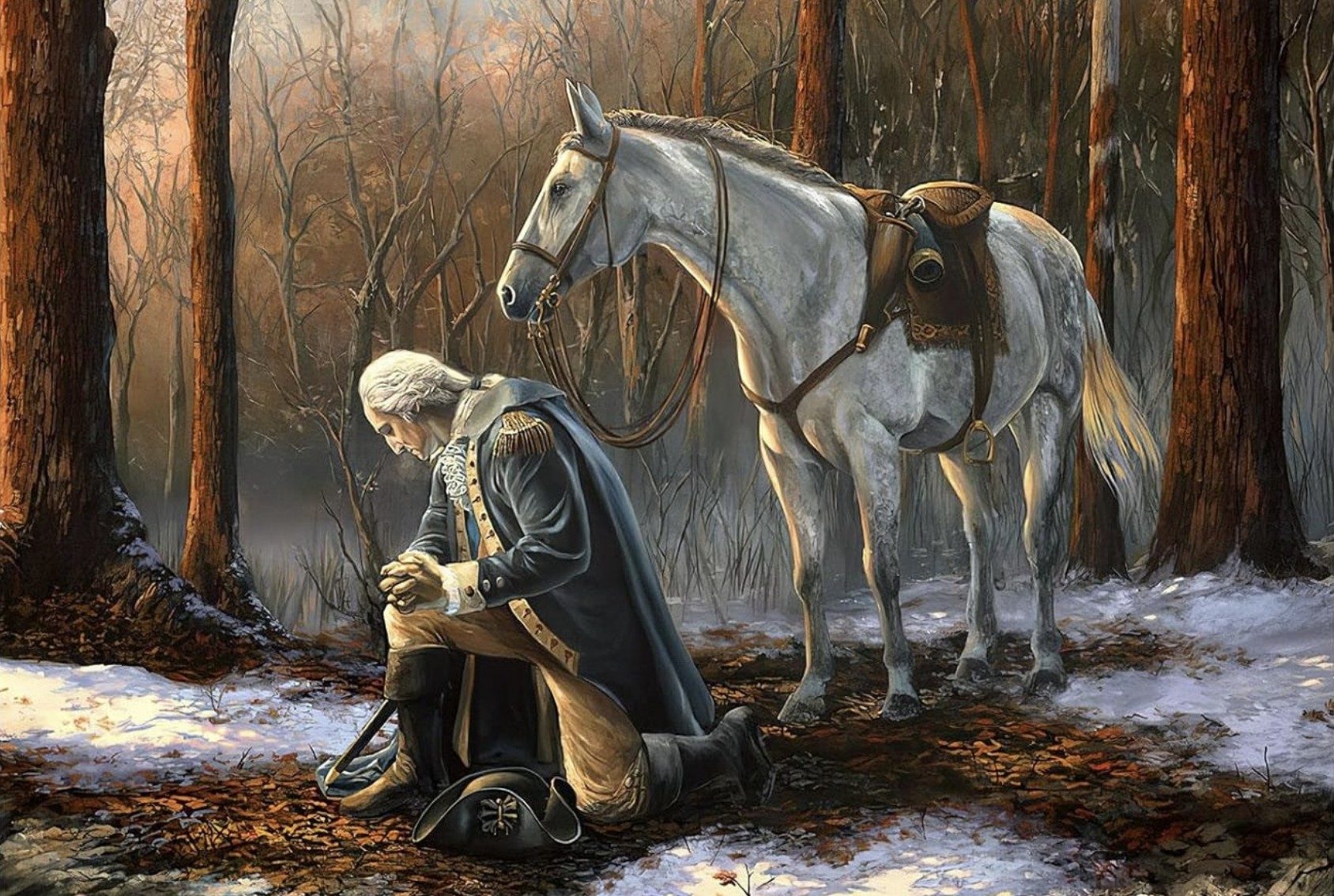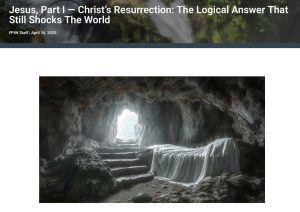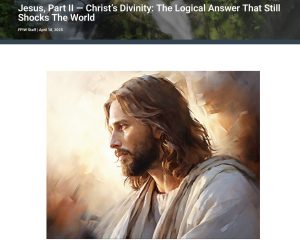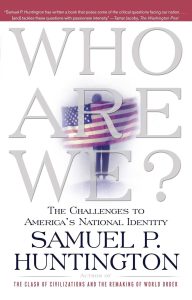 What does it mean to be an American citizen? We are experiencing “a crisis of national identity,” says Professor Samuel P. Huntington of Harvard University. In his book Who Are We?, Huntington notes that traditional American citizenship has Three Pillars: The English Language, Christianity, and British Customs.
What does it mean to be an American citizen? We are experiencing “a crisis of national identity,” says Professor Samuel P. Huntington of Harvard University. In his book Who Are We?, Huntington notes that traditional American citizenship has Three Pillars: The English Language, Christianity, and British Customs.
This four-part series from FPIW examines each — and the perils to them today:
• In Part 1, we focus on the impact of mass immigration as a threat to all Three Pillars.
• In Part 2, we support the First Pillar of the English language.
• In Part 3, we uphold the Second Pillar of Christianity.
• In Part 4, we honor the Third Pillar of our British roots, and then conclude with practical steps to strengthen American Identity.
🇺🇸 🇺🇸 🇺🇸
“As most everyone has heard, immigration is profoundly changing the contours of religion in America.”
— Sociologist Stephen Warner
A nation’s fate rests upon its faith. Throughout our lifetimes, many of us have witnessed first-hand the decline of Christianity in our communities, as well as the loss of Christian faith in those friends and family we care deeply about. There are two primary reasons for this:
(1) The mass immigration of non-Christian faiths entering the nation; and
(2) Secularism and Neo-Paganism arising from within the hearts of our own citizens, as many reject Christianity.
A restoration of American Identity must include a re-Christianizing of the United States. There remain challenging and unpleasant truths we must face, yet there are good reasons to be optimistic, too.
But first, the bad news.
I. De-Christianization
“For the first time in U.S. history, fewer than 50 percent of Americans belonged to a church, synagogue, or mosque,” reports Real Clear Religion in “The Decline and Fall of Christianity.” Consider also this chart from the Pew Research Center, which shows a decline in Christianity as well as a rise in “religiously unaffiliated” aka “nones”, i.e., Secularism and Neo-Paganism (more or less), and Gallup confirms the general religious landscape, too:
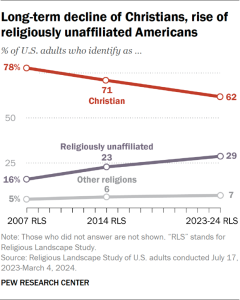
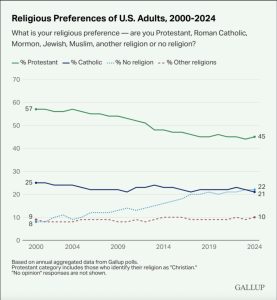
Even worse, that self-given label of “Christian” appears to be weak, paper-thin, and it lacks a strong connection with Christian tradition, or what C. S. Lewis calls “mere Christianity”. The center of Christianity is six fundamental beliefs, and it might be presented by way of the acronym “JARVIS”:
- Jesus is God: He is the Second Person of the Holy Trinity.
- Atonement: Jesus paid for our sins by dying on the cross.
- Resurrection: Jesus rose from the dead. We celebrate this as Easter.
- Virgin Birth: Mary was a virgin, made pregnant by the Holy Spirit.
- Inspiration of the Bible: It is inspired by God, not merely by man.
- Second Coming: The First Coming was when Jesus came in AD 1. We celebrate it as Christmas. Jesus will come back a second time.
George Barna drills down and examines the specific beliefs more deeply. When doing so, he finds that only 4% of the adult population in the US holds a biblical worldview, which is defined as such:
Barna’s definition of a biblical worldview includes a belief that absolutes exist and a belief that the Bible defines them. Additionally, the definition stipulated a belief that: Christ lived a sinless life; God is the “all-powerful and all-knowing Creator of the universe and He still rules it today”; salvation is by grace and not by works; Satan is a real being; Christians have a responsibility to witness; and the Bible is “accurate in all of its teachings.”
Immoral behavior follows a rejection of Christ or a weak link. For instance, the report notes that those without a biblical worldview were:
• 100 times more likely to endorse abortion
• 80 times more likely to say exposure to pornography is morally acceptable
• 15 times more likely to believe homosexual sex is acceptable
• 11 times more likely to say adultery is permissible
“The primary reason that people do not act like Jesus is because they do not think like Jesus,” Barna said in a news release. “Behavior stems from what we think — our attitudes, beliefs, values, and opinions.”
II. One Nation Under Many Gods
There is also the rise in “other religions.”
“The world has never seen a nation as religiously diverse as the United States,” states Time magazine. Others agree with the profound shift. Steven Tipton, co-author of Habits of the Heart, observes: “Awash in a great wave of immigrants and faiths from around the world, the first new nation finds itself both born again and radically reincarnated.” Noting the overthrow of Protestantism, George Marsden agrees that “no one religious group can any longer claim dominance in shaping an American moral consensus.”
 What was once often referred to as a “Christian nation” became a “Judeo-Christian heritage” in the middle of the twentieth century, and has now become more “multi-faith,” reports a PBS special, Exploring Religious America. Amidst cornfields in the heartland, one can see Buddhist temples, Sikh gurdwaras, Jainian centers, and Muslim mosques. There now are more than 5 million Muslims, especially in places such as Michigan and Minnesota.
What was once often referred to as a “Christian nation” became a “Judeo-Christian heritage” in the middle of the twentieth century, and has now become more “multi-faith,” reports a PBS special, Exploring Religious America. Amidst cornfields in the heartland, one can see Buddhist temples, Sikh gurdwaras, Jainian centers, and Muslim mosques. There now are more than 5 million Muslims, especially in places such as Michigan and Minnesota.
We are, some say, “one nation under many gods.”
This religious diversity is in large measure the consequence of the 1965 Immigration Act, which we detailed in Part 1. The 1965 Act liberalized immigration policy, opening our borders to peoples from the four-corners of the earth and importing people who are as different to each other as it’s humanly possible to be. That most certainly includes religious diversity.
III. Godless in Seattle
Closer to home, Seattle remains the least-religious large metro area in the USA, reports the Seattle Times. “In the Seattle metro area, around 64% of adults never attend religious services, or go less than once a year.” And Washington State follows a similar suit, especially on the west side:
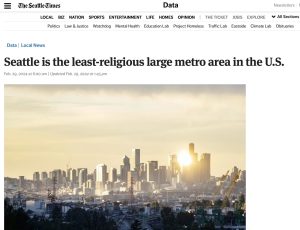
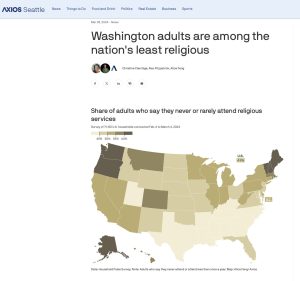
In addition to their own souls essentially divorced from God, a godless Seattle and Washington State has tragic practical consequences for others, too, such as a cheapening of life. In the state, there is 1 abortion every 30 minutes:
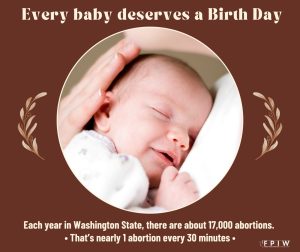
The above shows the rise of Secularism, and there is also the corresponding rise of Islam. Secularism up. Islam up. Christianity down.
In fact, Washington became the first state in the nation to make official two Muslim holidays, as HB 1434 (2025) was the result of dovetailing mass immigration with religious pluralism. As FPIW Action reports: It requires Washington State law to officially recognize the Muslim holidays Eid al-Fitr and Eid al-Adha as state holidays. To compare, Easter—perhaps the most prominent Christian observance—does not have federal or state holiday status. Furthermore, Christmas, historically celebrated as the birth of Jesus Christ, is increasingly referred to as a “Winter Holiday” by schools and federal organizations to avoid offending non-Christians.
IV. Shattering the Protestant Paradigm
Consider perhaps the most important scholarly work on how the Protestant paradigm has been shattered, or at least significantly cracked.
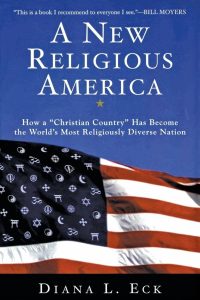 Diana L. Eck is Harvard Divinity School’s Professor of Comparative Religion and Indian (i.e., Hindu) Studies. She is also the creator and director of Harvard’s Pluralism Project, which studies and tracks pluralism in America, and a project for which President Clinton awarded her the prestigious National Humanities Medal in 1998. She released a significant scholarly work entitled A New Religious America: How a “Christian Country” Has Become the World’s Most Religiously Diverse Nation.
Diana L. Eck is Harvard Divinity School’s Professor of Comparative Religion and Indian (i.e., Hindu) Studies. She is also the creator and director of Harvard’s Pluralism Project, which studies and tracks pluralism in America, and a project for which President Clinton awarded her the prestigious National Humanities Medal in 1998. She released a significant scholarly work entitled A New Religious America: How a “Christian Country” Has Become the World’s Most Religiously Diverse Nation.
She delights in the religious and racial diversity millions of new immigrants bring and documents America’s shift away from the white-Protestant core. “[T]he presumption that America is foundationally Christian is being challenged, really for the first time. There is no going back. … Our new religious diversity is not just an idea but a reality, built into our neighborhoods all over America. Religious pluralism is squarely and forever on the American agenda.”
Immigrants, she proclaims, have “shattered the paradigm of America” as an Anglo-Protestant country. America now is, and should remain, “a nation that welcomes newcomers of every religion.” “The twin principles of religious freedom and nonestablishment provide the guidelines for something far more valuable than a Christian or Judeo-Christian nation. They provide the guidelines for a multi-religious nation…. [We] need to reaffirm [these principles] again and again.”
The cover of her book symbolizes her quest to de-Christianize America: it is a picture of an American flag, but in place of stars for each of the fifty states, she has inserted a buffet of religious symbols from around the world. Praising her book were many top-tier intellectuals and establishment media members. Professor Harvey Cox beams with eagerness: “Meet your new neighbors! … We need this book to tell us who we are and who we are becoming.”
In support of this agenda, President Barack Obama in 2006 stated in his “Call To Renewal” keynote speech: “Whatever we once were, we are no longer a Christian nation – at least not just [i.e., not merely a Christian nation]. We are also a Jewish nation, a Muslim nation, and a Buddhist nation, and a Hindu nation, and a nation of non-believers.”
V. Evangelical Empire: America’s Godly Heritage
Annuit Coeptis (“God smiles upon our undertakings”)
— On the Great Seal of the United States
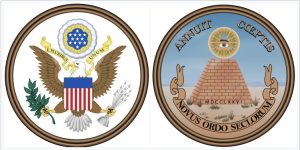 There has been a profound shift from the Founding Era, which was more solidly Christian. In fact, it has been described as an “Evangelical Empire” by Marty Martin.
There has been a profound shift from the Founding Era, which was more solidly Christian. In fact, it has been described as an “Evangelical Empire” by Marty Martin.
Samuel Huntington of Harvard adds: “At the heart of [America’s] culture has been Protestantism. America was founded as a Protestant society, and for two hundred years almost all Americans were Protestant.” “America was born Protestant. … The settling of America was, of course, a result of economic and other motives, as well as religious ones. Yet religion was still central.”
Huntington’s research offers us two distinctions between American and European Protestantism: Early Americans tended to have a greater “fierce spirit of liberty” and “dissidence of dissent”, noted Edmund Burke, than European Protestantism that was more in awe of political authority. America also was more Bible-centric. “The Bible played a role in shaping the culture for which there was no European parallel,” wrote scholar Gaines M. Foster.
America was Protestant — uniquely American Protestant — in its heart of hearts.
It’s true that states did divide by denominations: Pennsylvania was for Quakers and Methodists; Massachusetts and most of New England for Puritans; Maryland was mainly for Catholics; however, Baptists, fundamentalists, evangelicals, Pentecostals were throughout the early 13 colonies. Despite such divisions, there was still a deeper, more fundamental Christian unity in the fundamentals of the faith (“mere Christianity”). In Federalist No. 2, Founding Father John Jay gave thanks to God for six common bonds among Americans. The third bond was Christianity:
Providence has been pleased to give this one connected country to one united people—a people:
[1] descended from the same ancestors [of Europe, especially Britain],
[2] speaking the same language,
[3] professing the same religion,
[4] attached to the same principles of government,
[5] very similar in their manners and customs, and
[6] who, by their joint counsels, arms, and efforts, fighting side by side throughout a long and bloody war [the American Revolution], have nobly established their general liberty and independence.
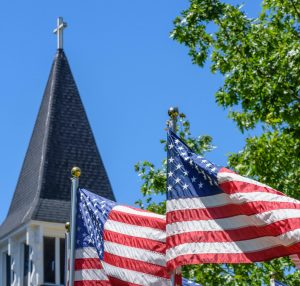 The Declaration of Independence, as many have noted, includes phrases such as “Nature’s God” and “Creator” and “Supreme Judge of the World” and “divine Providence.” In the U.S. Constitution, the First Amendment was not to keep the Church out of the government, but to protect the churches from interference by the new federal government created by the Constitution. “Hands off the churches,” it says in effect. The very first thing in the very First Amendment is to protect the churches.
The Declaration of Independence, as many have noted, includes phrases such as “Nature’s God” and “Creator” and “Supreme Judge of the World” and “divine Providence.” In the U.S. Constitution, the First Amendment was not to keep the Church out of the government, but to protect the churches from interference by the new federal government created by the Constitution. “Hands off the churches,” it says in effect. The very first thing in the very First Amendment is to protect the churches.
Huntington points out how Christianity impacted the government: “Well into the nineteenth century, Sunday church services were held in the chambers of the Supreme Court as well as the House of Representatives.” (See this link for the mythical “wall of separation” between church and state. See this link for the five views of church-state separation.)
To support the influence of the Bible and Christianity upon the founding, here are a few facts that David Barton highlights in his book America’s Godly Heritage as well as found in the documentary Monumental:
• Twenty-nine out of the 56 men who signed the Declaration of Independence held degrees from schools that today would be considered seminaries or Bible schools. Also, more than two-thirds of them opposed slavery.
• In 1782, Congress officially approved and oversaw the project to print the first English-language Bible in America. It is sometimes called “The Bible of the Revolution,” and it bears an endorsement: “the United States in Congress assembled . . . recommend this edition of the Bible to the inhabitants of the United States.”
• Almost all the 55 Founding Fathers at the Constitutional Convention (1787)—the convention where the Constitution was written—were members of traditional Christian churches. George Washington, for example, was a member of Christ Church; it was the first Episcopalian Church in America and is in Philadelphia.
For those who wish for more detail, here is an FPIW essay with sample quotations from key figures throughout American history that support the US as rooted in Christianity. Many Americans have never read these quotations. And, for those who enjoy videos, here is Charlie Kirk explaining in more detail the richness of Christian America:
VI. Hope
Where is the hope for our nation to return to Christ? Answer: In the young. Here are four examples:
(1) “Let’s go to church”: Barna reports about the nation at large: “For the first time in decades, younger adults—Gen Z and Millennials—are now the most regular churchgoers, outpacing older generations, who once formed the backbone of church attendance.”
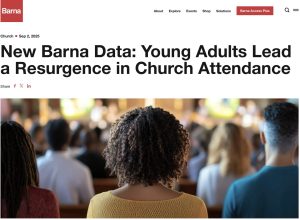
(2) “Thank you, Charlie”: In addition to church attendance, millions of youth around the nation — especially young men in college — have been influenced profoundly by Charlie Kirk and others who stand strong for the truth of Christianity.

In Washington State, one elderly Patriot nearing his death wrote:
“Thirteen years after Charlie Kirk emerged, the entire edifice of centuries of attacks on Judeo-Christian civilization stands to be proven false for much of our youth. As a result, I will be going to my grave knowing that we have the beginnings of a generation of youth to carry on, which is the sweetest and most beautiful thing to know. Thank you, Charlie!”
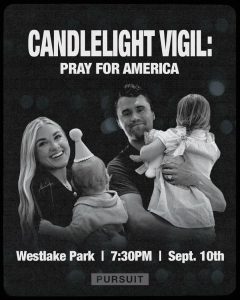

(3) The Great Alliance: Around the nation, there remains a strong Evangelical-Catholic Alliance, as we share common moral and theological ground upon which to defend life, marriage, religious liberty, and parental rights. A united Church is formidable, and a united Church can help make America one nation under Christ again.
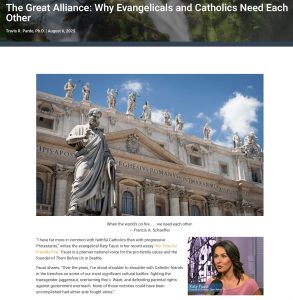
(4) “God Save Seattle”: In Washington State, FPIW is delighted to lock arms with Strategic Partners in order to advance the Kingdom. For specifically the greater-Seattle area, The Pursuit NW Church has made extraordinary advances in capturing hearts and taking ground in King County:
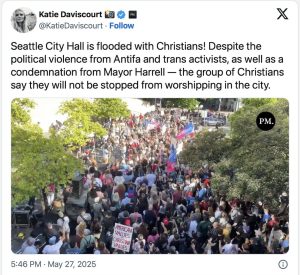

VII. A Shining City Upon A Hill
The life of our nation rests upon our heart’s loyalty, our connection to the One who gives life. Every successful nation in world history has a strong bond to God and a clear purpose bestowed by Him. Many Americans believe our nation is unique and exceptional. As Conrad Cherry points out, Americans have “the sense of America’s special destiny under God”. In that spirit, we close this essay with words from President Ronald Reagan who upholds America as “a shining city upon a hill” (cf. Matthew 5:14), a biblical phrase that comes from American Forefather John Winthrop, Governor of the Massachusetts Bay Colony during the 1600s. Reagan states eloquently:
After 200 years, two centuries, she still stands strong and true on the granite ridge, and her glow has held steady no matter what storm.
Now, as America re-establishes her core identity, it is time to renew the soul of the nation, and make sure she remains, as the great Christian author G. K. Chesterton wrote, “a nation with the soul of a church.”
🇺🇸 🇺🇸 🇺🇸
As detailed in Part 1, mass immigration has profoundly shaped the American Story. It has engendered “a crisis of national identity” about what it means to be an American. The First Pillar of American Identity is the English language, as shared in Part 2. The Second Pillar is Christianity, as explained here in Part 3. In our final Part 4, we shall defend the Third Pillar of British Customs.
#####
Additional Resources
Who is Jesus of Nazareth? How can we bring people to Christ? We suggest starting with the Handbook for Christian Apologetics, or for smaller samples of ideas from that book, click the images below for shorter essays from FPIW:
American culture is important to us at FPIW, and we hope you share our sincere passion in defending and advancing Biblical and conservative values in the public square. Join us! Please sign up to become a Defender today, and join us in praying for our elected legislators.

